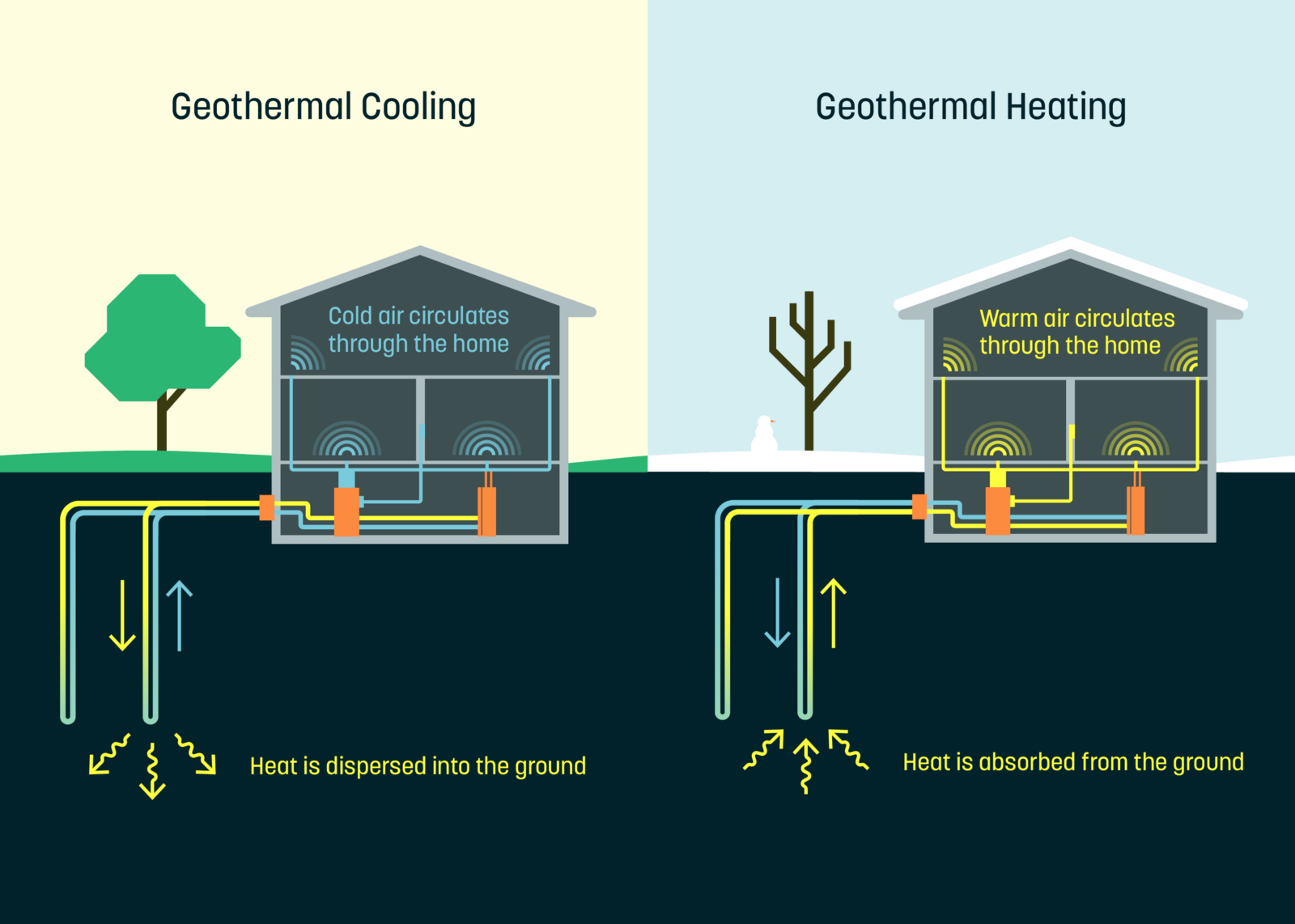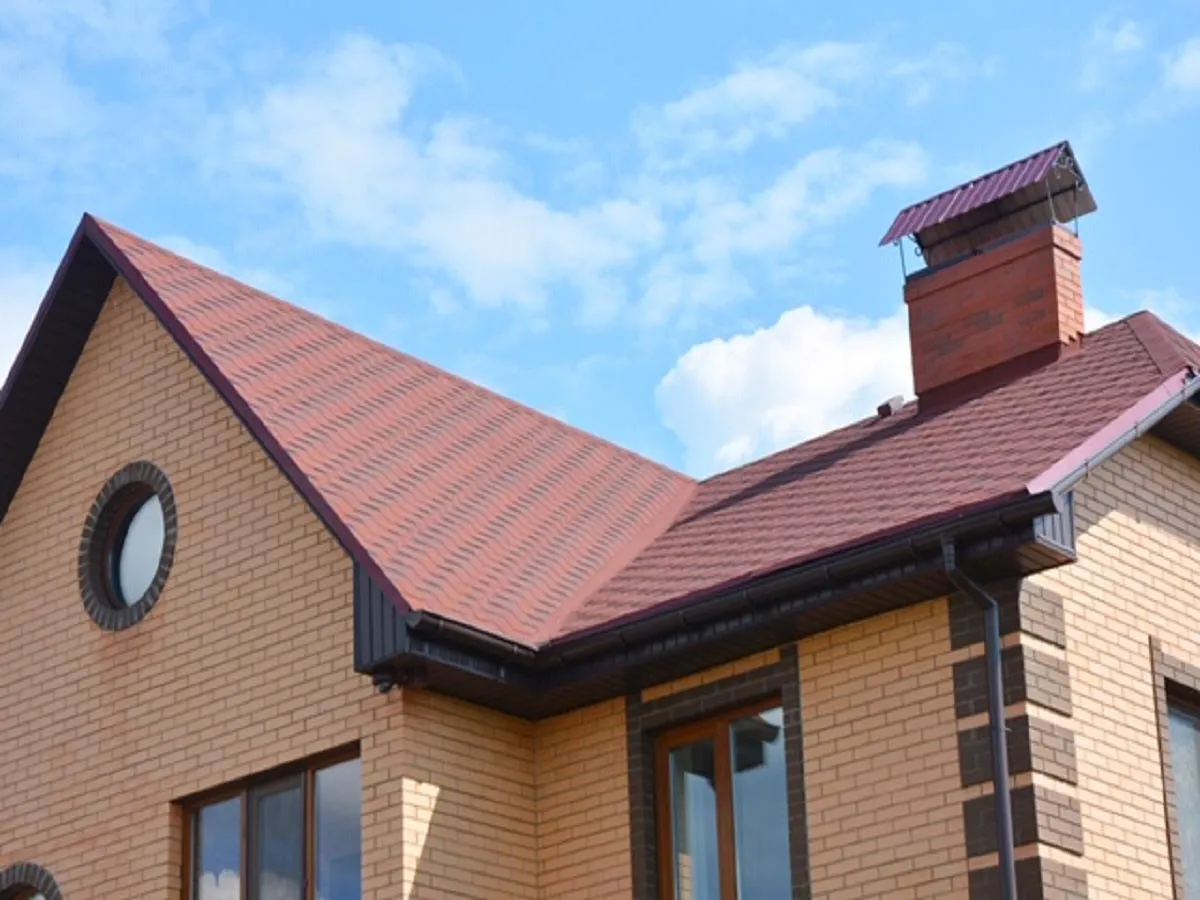What is Geothermal Cooling?
First, let’s get to know what geothermal cooling is. Geothermal cooling uses the earth’s natural temperature to cool your home. It’s based on the fact that the ground below the surface remains at a relatively constant temperature all year round. In simple terms, during hot weather, the ground stays cool, and this coolness can be used to lower the temperature inside your home.
Imagine your home is a big box, and you want to keep it cool. Instead of using a regular air conditioner that blows cool air in, geothermal cooling takes the coolness from the ground and brings it into your home. It’s like having a giant, natural air conditioner right below your feet! Also read Is Geothermal Cooling Feasible in Florida?
How Does Geothermal Cooling Work?
To understand how geothermal cooling works, think of a giant underground pipe system. Here’s how it goes: pipes are buried in the ground, and a special fluid (often a mix of water and antifreeze) circulates through them. As the fluid moves through these pipes, it absorbs the cool temperature from the ground.
Once the fluid reaches the surface, it goes into a heat exchanger inside your home. The heat exchanger is like a magical machine that transfers the coolness from the fluid into the air of your house. It’s kind of like passing a really nice, cool breeze through a fan. This method can be very effective because the ground temperature is often cooler than the air during the hot summer months in Florida.
Why Consider Geothermal Cooling?
You might be asking, “Why should I think about geothermal cooling?” There are a few good reasons:
- Energy Efficiency: Geothermal cooling systems use less electricity compared to traditional air conditioners. This means they can lower your energy bills. It’s like using less power to keep your house cool.
- Eco-Friendly: Since geothermal systems rely on the earth’s natural temperature, they don’t emit harmful gases or pollutants. They help protect our planet, which is a big win for the environment.
- Long-Term Savings: Although geothermal cooling systems can be expensive to install, they can save you money over time. They have fewer moving parts and require less maintenance, so they can last for many years.
- Consistency: The ground temperature remains steady regardless of how hot it gets outside. This means you can enjoy a consistent and comfortable temperature in your home all year round.
Challenges in Florida
Even though geothermal cooling has many benefits, there are some challenges to consider, especially in Florida. Let’s dive into these challenges to understand if geothermal cooling is a good fit for Florida homes.
High Installation Costs
One of the biggest hurdles is the initial cost. Installing a geothermal cooling system can be quite expensive. The process involves drilling or digging to place the underground pipes, which can add up to a significant investment. For many homeowners, this cost can be a barrier.
Ground Conditions
Florida’s soil and ground conditions can also affect the feasibility of geothermal cooling. The state is known for its sandy soils and high water table, which can make the installation process more complex and costly. In some areas, the ground may not be suitable for burying the necessary pipes, which can limit the effectiveness of geothermal systems.
Space Requirements
Geothermal systems require space for the underground loops or pipes. In Florida’s densely populated urban areas, there might not be enough space to install these systems. If your property is small or if there are already many structures close by, finding space for the necessary equipment can be challenging.
Comparing Geothermal Cooling to Other Systems
To see if geothermal cooling is right for you, let’s compare it to other cooling options commonly used in Florida.
Traditional Air Conditioning
Traditional air conditioners are very popular in Florida due to their effectiveness. They work by cooling air and blowing it into your home. However, they use a lot of electricity, which can make your energy bills quite high. They also need regular maintenance and can break down over time.
Heat Pumps
Heat pumps are another alternative. They can both heat and cool your home. In cooling mode, they work similarly to air conditioners. They are more energy-efficient than traditional air conditioners but still require regular maintenance and can be costly to run during extreme temperatures.
Evaporative Coolers
Evaporative coolers, or swamp coolers, use water to cool the air. They work best in dry climates and might not be as effective in Florida’s humid conditions. They also don’t cool as efficiently as air conditioners or geothermal systems.
The Future of Geothermal Cooling in Florida
So, what does the future look like for geothermal cooling in Florida? While there are challenges, there are also opportunities. Advances in technology may make geothermal cooling more affordable and adaptable to different ground conditions. As more people become interested in sustainable living, there could be more support and incentives for installing geothermal systems.
Government Incentives
In some places, government incentives and rebates are available for those who choose to install geothermal systems. These incentives can help offset the initial costs and make geothermal cooling more accessible to homeowners. Checking with local and state programs might reveal opportunities for financial assistance.
Technological Advances
New technologies are being developed to make geothermal systems more efficient and easier to install. For example, better drilling techniques and materials could reduce costs and make it possible to install geothermal systems in areas with challenging ground conditions.
Growing Awareness
As more people learn about the benefits of geothermal cooling, there could be a greater push for its adoption. With growing awareness about climate change and energy efficiency, geothermal cooling might become a more popular choice for homeowners in Florida.
Making the Decision
If you’re considering geothermal cooling for your Florida home, it’s essential to weigh the pros and cons. Here are some steps to help you decide:
- Evaluate Your Property: Check the size of your property and the soil conditions. Consult with a geothermal professional to see if your property is suitable for installation.
- Consider Costs: Look into the initial costs and potential savings over time. Factor in any available incentives or rebates that might help reduce the cost.
- Get Professional Advice: Talk to experts who specialize in geothermal systems. They can provide insights and help you make an informed decision based on your specific needs and circumstances.
- Explore Alternatives: Compare geothermal cooling with other cooling options to see which one fits best with your lifestyle and budget.
Conclusion
In summary, is geothermal cooling feasible in Florida? The answer is yes, but with some caveats. While geothermal cooling offers impressive benefits like energy efficiency and environmental friendliness, it also comes with challenges like high installation costs and ground conditions.
For those who are committed to sustainable living and willing to invest in the initial setup, geothermal cooling can be a great option. It’s important to weigh the pros and cons carefully and consult with professionals to determine if it’s the right choice for your home. As technology advances and more people embrace green solutions, geothermal cooling may become a more common and accessible option for Floridians looking to stay cool in a cost-effective and eco-friendly way.





